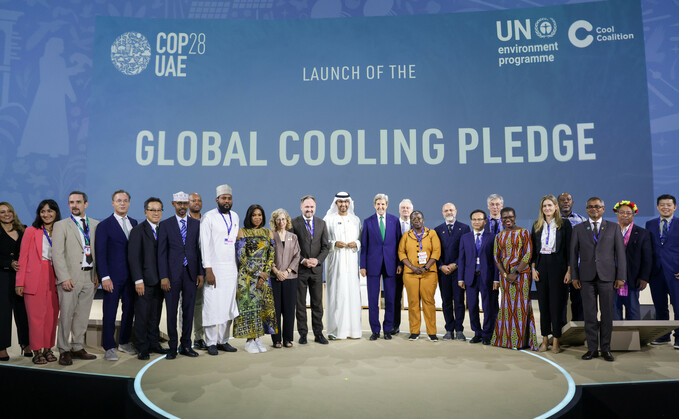At the ongoing COP28 climate summit in Dubai, a groundbreaking initiative emerged as 63 countries, including the United States, Canada, and Kenya, committed to a Global Cooling Pledge. This landmark pledge focuses on deeply cutting emissions linked to cooling systems, encompassing refrigeration for food and medicine, as well as air conditioning.
The pledge outlines a collective effort to reduce cooling-related emissions by at least 68% compared to 2022 levels by the year 2050. Additionally, signatory nations are committed to implementing minimum energy performance standards by 2030. The aim is to chart a course that not only curtails emissions but also enhances access to sustainable cooling methods.
U.S. climate envoy John Kerry emphasized the importance of addressing cooling-related emissions across all sectors while simultaneously ensuring increased access to sustainable cooling solutions. Currently, 1.2 billion people lacking access to cooling face a critical need. As temperatures rise, populations grow, and incomes increase, the demand for cooling is expected to triple by mid-century.
Freetown mayor Yvonne Aki-Sawyerr highlighted the paradox where, as temperatures and incomes rise, the aspiration for improved living conditions includes access to cooling. However, the surge in air conditioner usage intensifies the climate crisis, with cooling emissions projected to reach between 4.4 billion and 6.1 billion metric tons of carbon dioxide equivalent by 2050, according to a report by a United Nations Environment Programme (UNEP) coalition.
The cooling pledge aims to prevent a scenario where individuals purchase inexpensive air conditioners, contributing to energy system strain and potential collapse. By uniting nations in this commitment, there is optimism about constructing regulations or incentives for the cooling industry.
India, a significant player in future cooling demand, has not yet joined the pledge. The country’s officials cite commitments made in 1992 under the Montreal Protocol as the limit for undertaking new targets. Nevertheless, nearly three-quarters of the potential for reducing cooling emissions by mid-century lies within G20 countries, according to the UNEP report.
Progress on the cooling pledge’s objectives will undergo annual tracking until 2030, with regular assessments during U.N. climate summits. The pledge aligns with broader COP28 initiatives, including a separate pledge to triple renewable energy and double energy efficiency rates by 2030, supported by at least 118 countries.
















